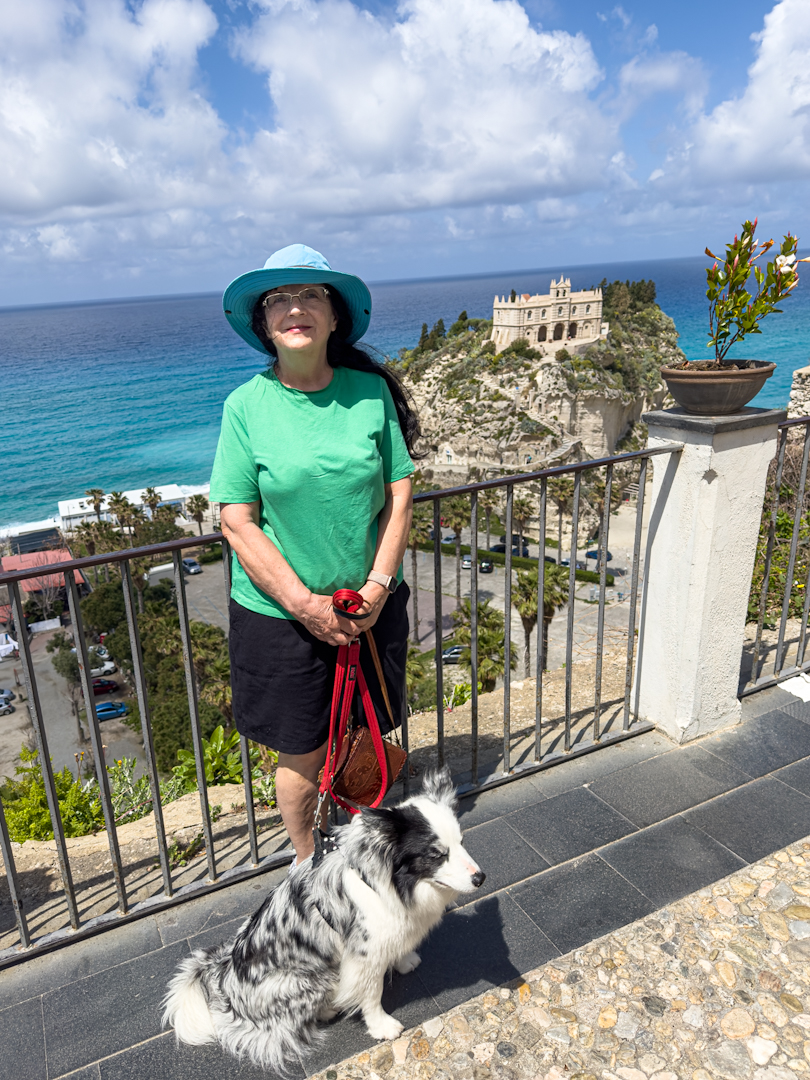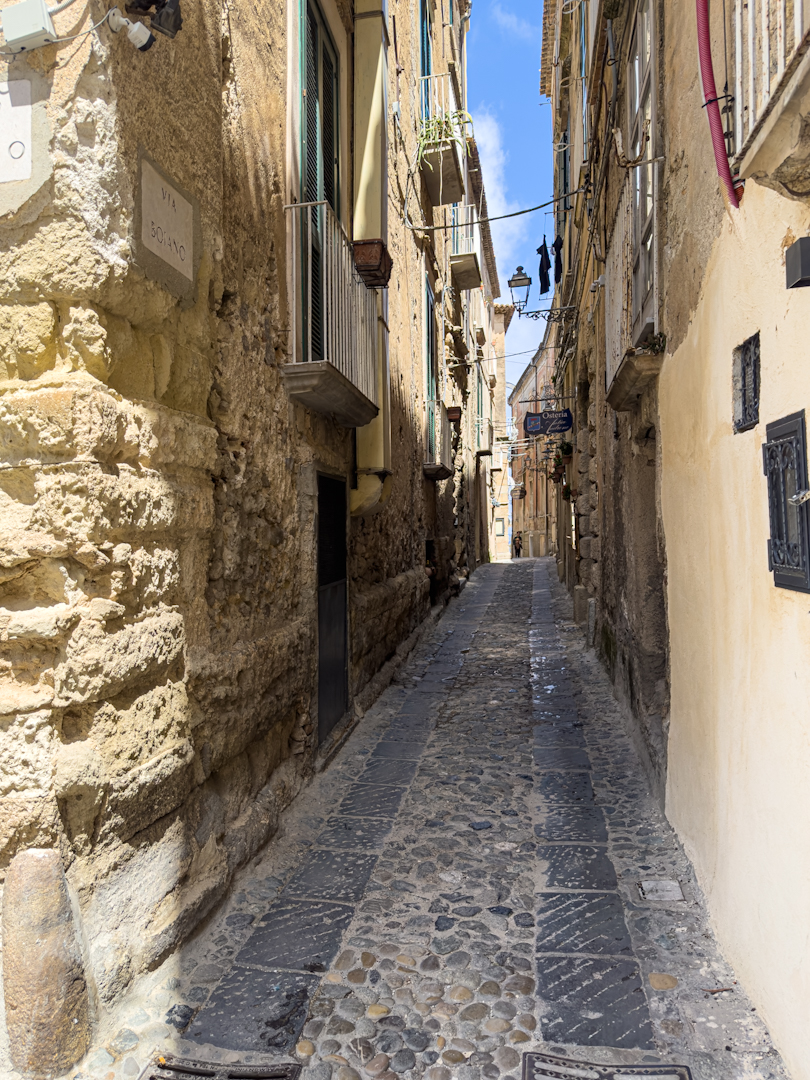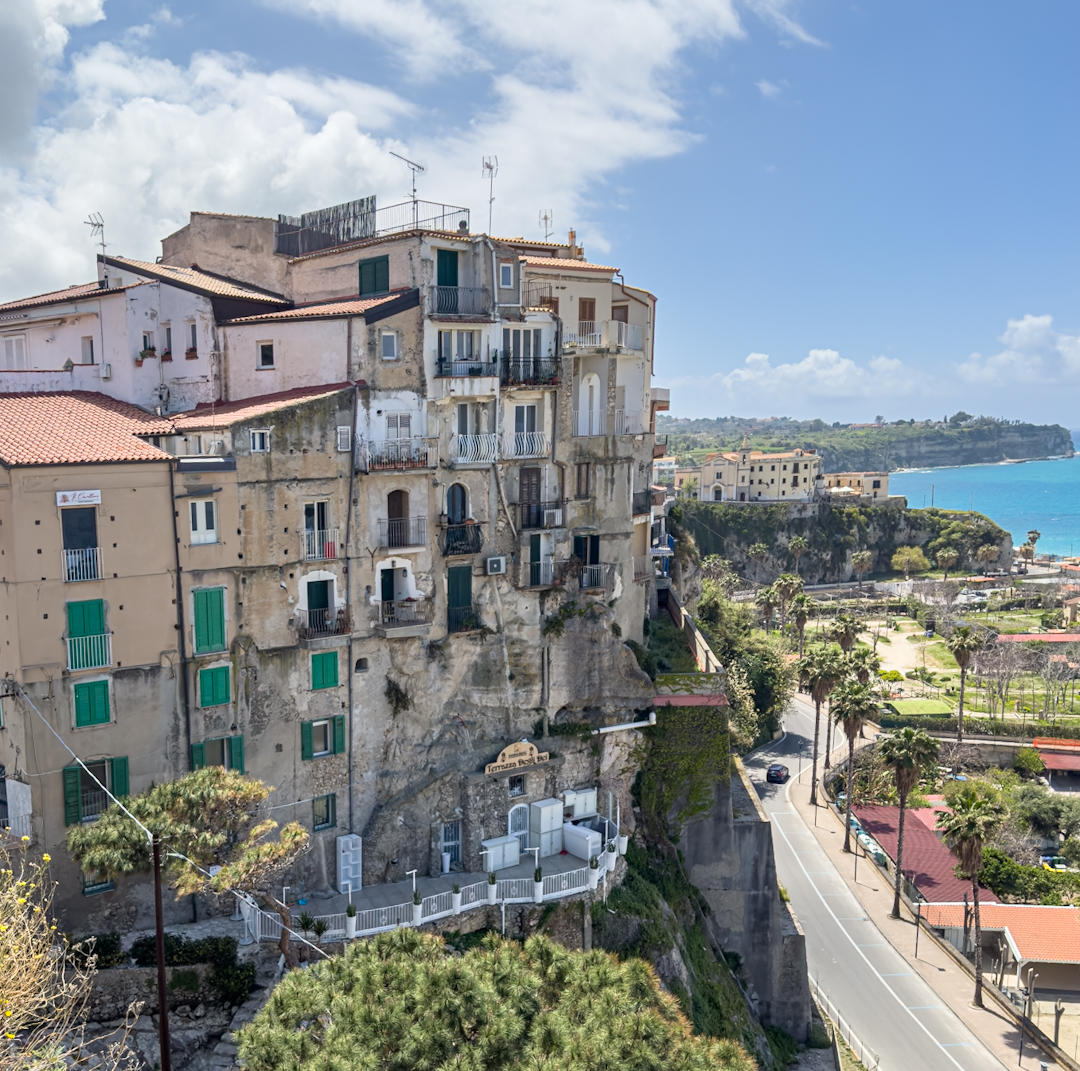Tuesday 25th April
By morning Lago Silino was bathed in sunshine and looked all the better for it.

Having crossed the mountains to get back to the motorway and avoid the closed coastal route, today’s journey would be a straightforward blast down the Autostrada to rejoin the coast south of the blockage.
The motorway was another example of Italian engineering. The road carved its way through the southern Appenines in the now familiar manner – tunnel, viaduct, tunnel, viaduct ad nauseam. Even this far south the highest peaks were still covered in snow.

Basil eventually eased off the motorway for a final few miles on the coast road to the small town of Tropea. Today is a public holiday in Italy. It’s Liberation Day, to celebrate Italy’s liberation from fascism. One could be a little cynical given that Italy was one of the leading fascist nations until the arrival of the Allies and currently has a leader, Ms. Meloni, whose political party some refer to as fascist. But, hey ho.
Anyway the consequence of Liberation Day was that the town was packed and we eased Basil through the crowds to Camping Marina dell’Isola (38.678306, 15.894182 €23), which is another cramped Italian campsite which made manoeuvring Basil onto a pitch, difficult.
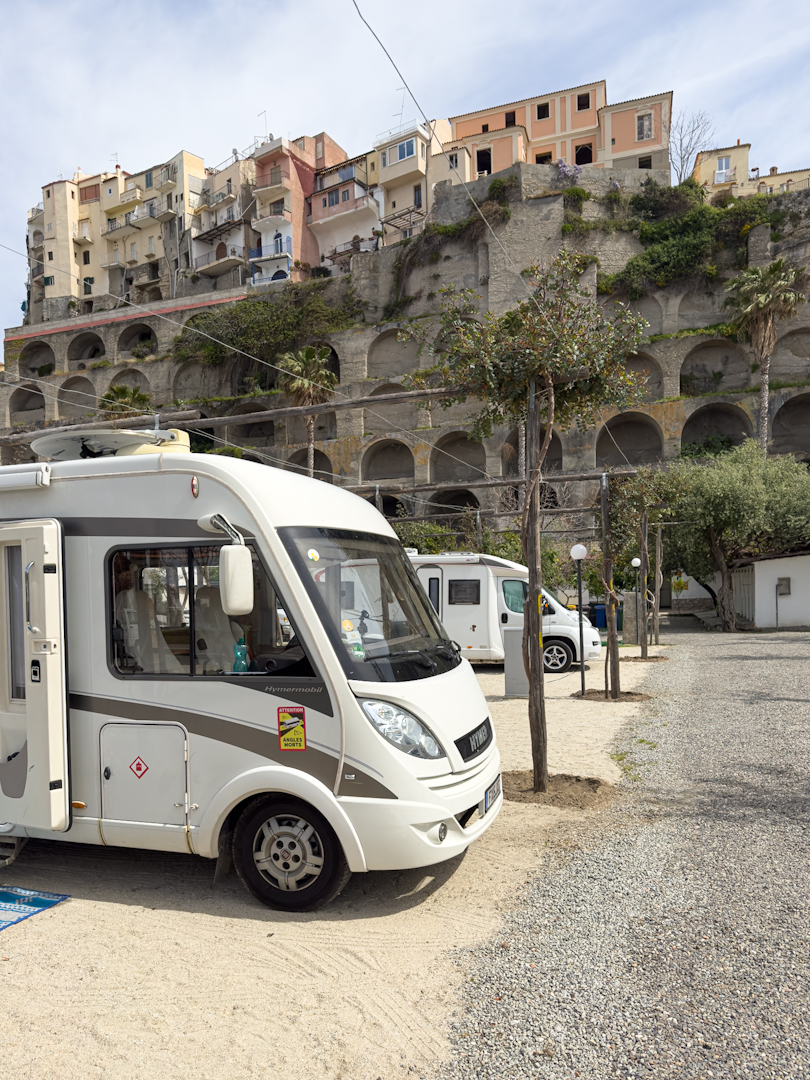
The beaches here are are supposedly not accessible to dogs, but Sarah has found that once the crowds have gone in the late afternoon and not arrived in the early morning, dogs proliferate.
Wednesday 26th April
Skye arrived back from her early(ish) morning walk soaked from head to tail. Apparently in lieu of birds to chase she has started to hunt waves!
The reason we came to Tropea was that it is another place in the list of Italy’s most beautiful towns. It certainly looks the part from a distance, perched at the top of a 50 metre cliff, with azure seas and sandy beaches beneath.
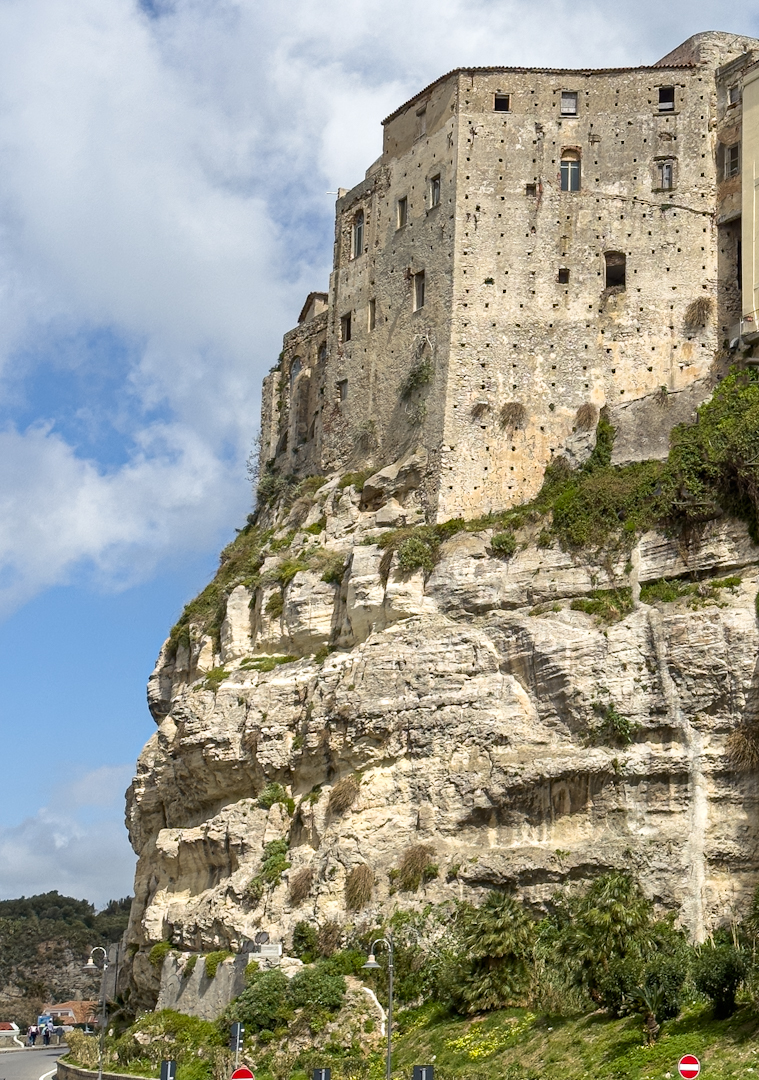
We made our way up the steep stairs from our campsite to the town and had a wander. The only building of real note in Tropea is the Norman Cathedral built in the 12th Century. You will find in the next month’s posts that this part of Italy has been ruled by nearly everyone. The Greeks, Romans, Lombards, Normans, Arabs, Aragonese and many more. The Cathedral did, indeed, look very Norman, and we should know. Our home city has a Norman Cathedral as have many other UK cities.
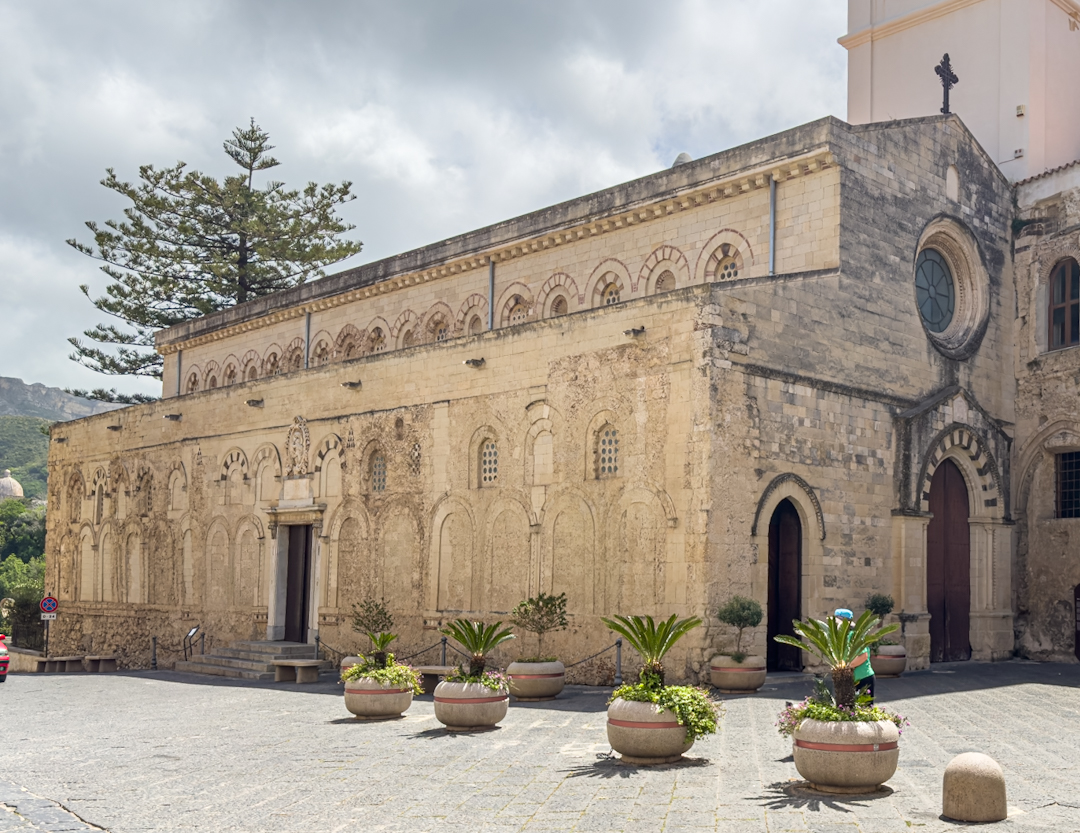
Tropea’s Cathedral was in the Romanesque style, with rounded archways and unusually plain on the inside, especially for Italy. Bare, local, sandstone which made it feel like an English Parish Church, because its size was more akin to an English Church than Cathedral.
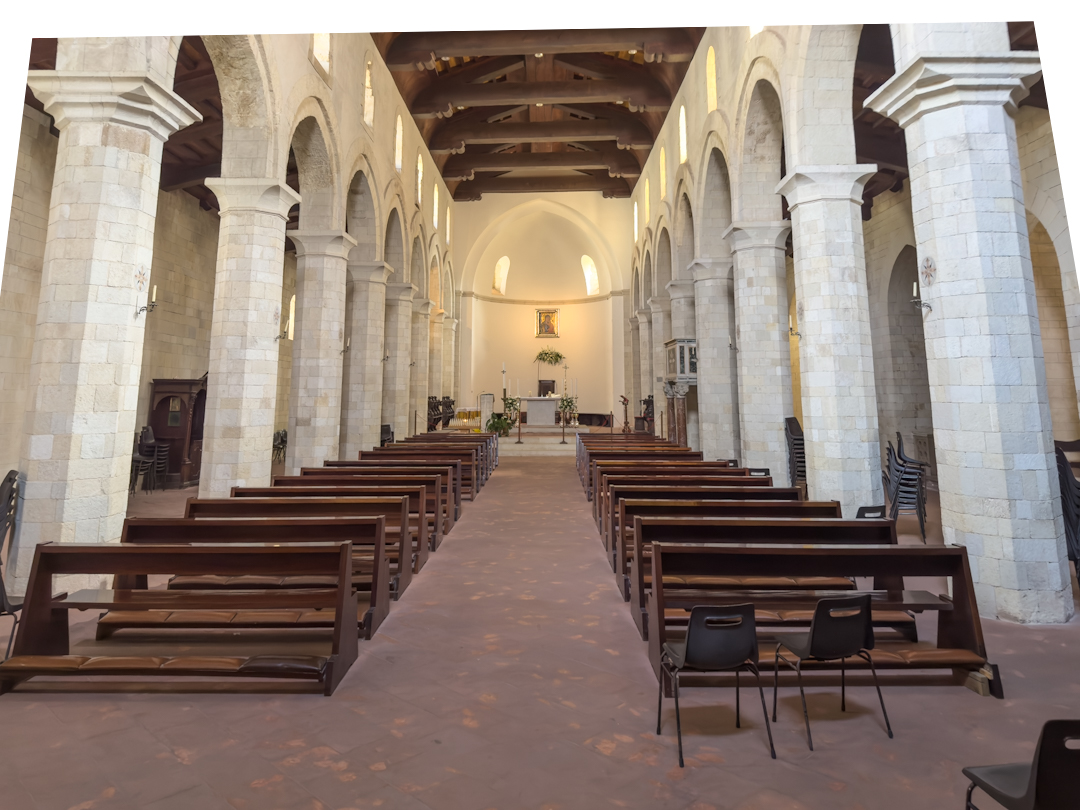
It is dedicated to the Virgin Mary of Romania, which is not a person but a 14th Century painting which hangs in the Cathedral. Apparently of Byzantine origin it has supposed conferred protection on the town ever since its arrival.
The Cathedral displays a bomb from the Second World War which hit the Cathedral but didn’t explode. You may wonder why it didn’t explode – I have the answer – The Virgin Mary of Romania, that’s why!

The rest of the town was nothing special in our opinion. It is obviously a very popular tourist destination because of its beaches and the town was a little too commercial for our liking and apart from its cliff top location, we couldn’t really see why it had been included in the list of Italy’s most beautiful towns.

From the town there is a fantastic view of the Mediterranean and the town’s other major attraction the Santa Maria’dell Isola. This is a 20th Century church built on a rocky mound adjacent to Tropea. Historically it was the site of a 12th Century Monastery, but little of the original remains as it was devastated by a series of earthquakes, the last of which was in 1905.
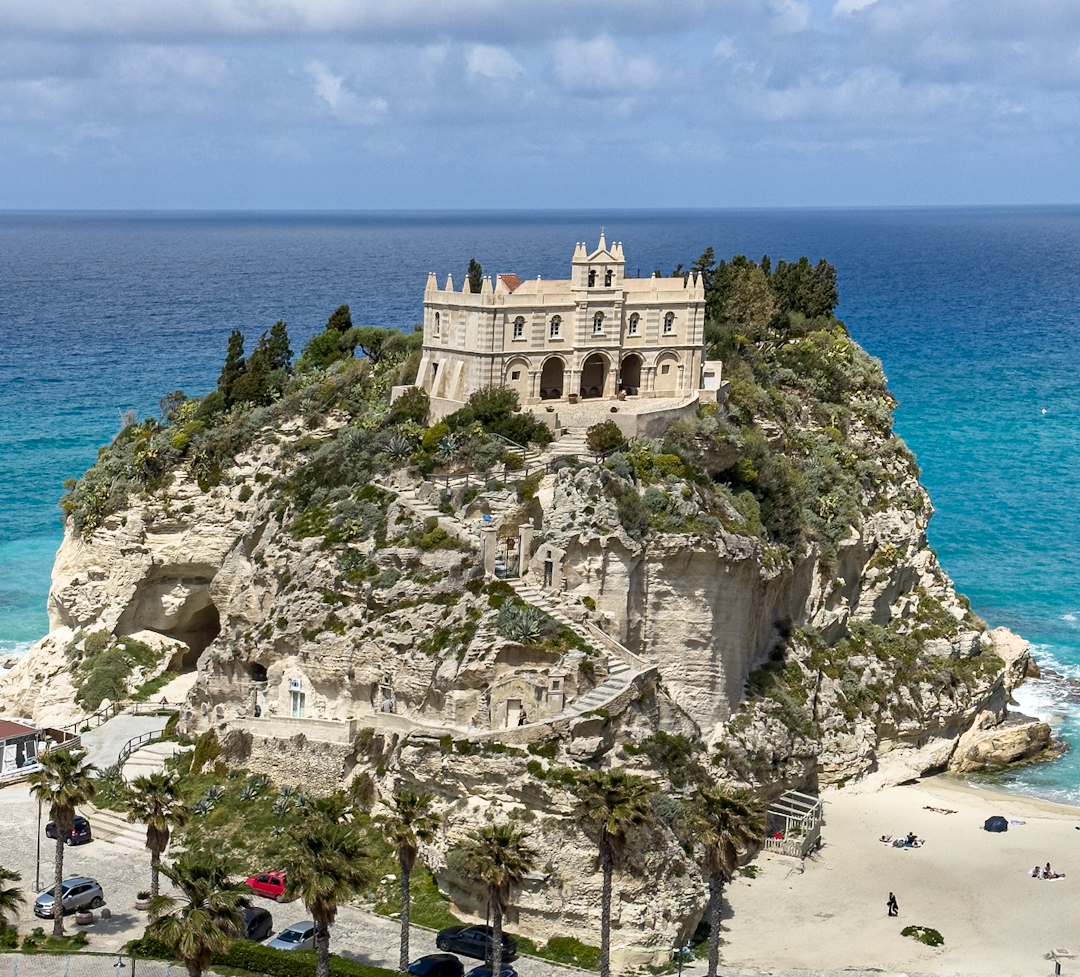
Tomorrow we hope to head further south to a campsite we really enjoyed on our tour in 2017.
